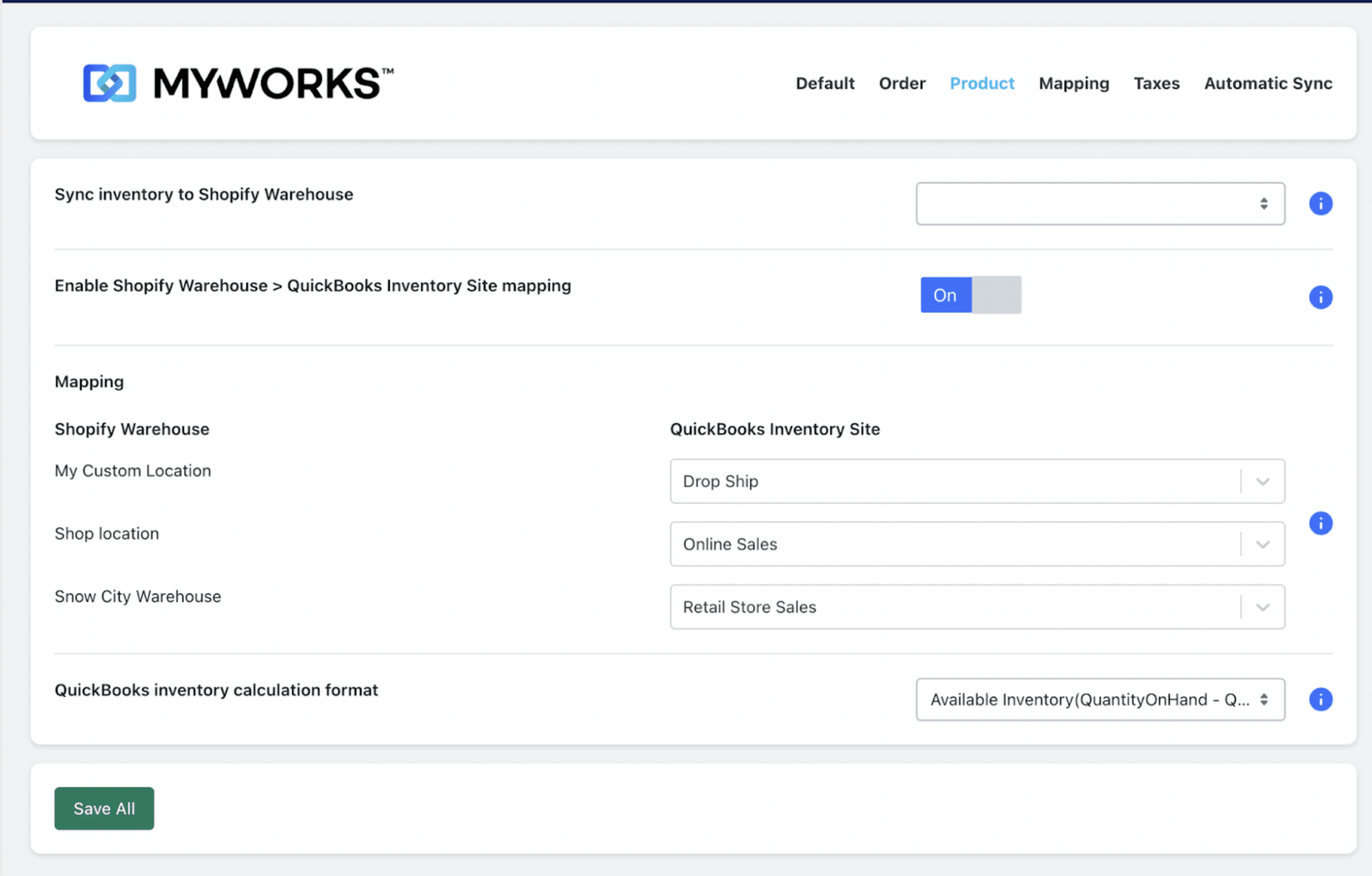Inventory management can make or break your ecommerce business. There are many online stores to choose from, so customers can easily go elsewhere if you sell out.
And this wouldn’t be a one-time thing — almost half of people say they’re prepared to switch brands completely over product availability. If you frequently sell out of popular items, it could significantly impact customer loyalty and your bottom line.
For your business to thrive, it’s crucial to use the right techniques for ecommerce inventory management. Let us show you the best ten strategies for monitoring stock, maintaining optimal levels, and preventing costly mistakes.
What is inventory management in ecommerce and why does it matter?
Ecommerce inventory management is when you monitor and manage your stock just like in a physical store. The aim is to ensure the right products are available at the right time.
Tasks typically involve:
- Ordering in new products
- Restocking items
- Monitoring inventory across locations
- Forecasting demand
- Coordinating with suppliers
- Managing customer returns
Many aspects of inventory management are simpler for ecommerce businesses than brick-and-mortar stores. You don’t need to keep stock on-site and there’s less risk of items getting damaged or lost in a busy store room.
However, inventory management for ecommerce businesses comes with its own unique challenges.
Many online stores sell across multiple channels including their website, social media platforms, and online marketplaces. Monitoring stock levels becomes more complex. It’s then harder to spot issues like stockouts or errors and resolve them before they affect customers.
Ecommerce businesses also face higher return rates than physical stores. You must inspect these items, account for them in your records, and potentially return them to your warehouse. All of this leaves you more open to inaccuracies and financial losses.
The right techniques make inventory management more streamlined and minimize the risk of costly errors. In the next section, we’ll explore the best ones for ecommerce businesses.
1. Demand forecasting
Demand forecasting is when you predict what products will be most popular in the coming months so you can get sufficient stock. The technique makes inventory management more efficient as you already have items to hand when demand rises.
Sometimes, demand forecasting is as simple as preparing for seasonal trends. Many stores sell specialty goods for Halloween and Christmas as an example. You can just look at historical sales data to see what stock you’re likely to need.
Demand in some industries can be more unpredictable due to unexpected shifts. Electronics is a good example as advances can suddenly make entire ranges obsolete.
Even in unpredictable industries, there are ways to anticipate changes in demand. Stay updated with the regulations in your sector can help you plan ahead. For example, the EU has introduced a law saying all manufacturers and suppliers must use USB-C for devices by 2026. You can safely assume the demand for other peripherals will begin to drop.
Market research can be time-consuming. Use demand forecasting software to analyze the data for you and get instant insights. Most popular e-commerce platforms have dedicated solutions and there are now even AI-powered solutions you can integrate like Monacle.
2. Dropshipping
Want to offer a range of products but don’t have the space or the staff? Dropshipping allows you to maintain a fully stocked warehouse without keeping the items on hand.
Your ecommerce business acts as a hub that takes orders and arranges for shipping. The manufacturers or suppliers store the items on your behalf. That means you can invest less in stock upfront and don’t need to worry about storage space or handling products.
However, you need to build a strong supplier network as your partners hold your company’s reputation in their hands. They have total control over the shipping and delivery process. One unreliable supplier could lead to many late or missing deliveries and significantly damage customer trust in your store.
If your items have very specific requirements, dropshipping might not be an ideal option. Your suppliers might not have the expertise to handle fragile or highly regulated items.
3. Just In Time (JIT)
JIT’s a good alternative for those who have a small amount of space but can’t take the risks associated with dropshipping. It involves ordering items only when you’re ready to start production and shipping. That way you only ever have the minimum stock on-site to fulfill orders.
As with dropshipping, you need to maintain a strong supplier network. Unreliable partners can still lead to delays and unhappy customers. However, JIT gives you more opportunities to resolve potential issues — you can expedite deliveries if you’ve fallen behind schedule or add extra items to packages to apologize for delays.
JIT is best for ecommerce businesses with stable sales, limited room, and little capital to invest. It’s popular among those selling niche products out of their own home.
4. Safety Stock Management
We’ve discussed the best techniques for businesses that lack storage space. Here’s an alternative for those with sufficient room but unpredictable sales.
Safety stock means you keep a surplus of important stock so you never risk running out. If there’s an unexpected surge in demand or an issue with a supplier, you’ll still have some of the product to hand.
The strategy only works if you’re selective. If you order a surplus of every item, you’ll overstock your business and potentially waste money. It’s a bigger problem than you might think —- McKinsey estimates that US businesses currently have a collective $740 billion in unsold stock.
One basic strategy is to prioritize your most popular stock. If customers order something regularly, they probably rely on it. They’ll be more likely to get frustrated and look elsewhere if you run out.
Also, consider how much people are likely to need certain items. If you sell replacement parts for appliances, your customers may be unable to wait. Again, they’ll just go to another business.
You can assess networks to see which items are most at risk of delays or shortages. Safety stock management is an excellent option if you rely on international manufacturers and suppliers. These are the most unpredictable as they’re complex and therefore more vulnerable to disruptions like natural disasters or conflicts.
5. ABC Analysis
ABC analysis is a way to rank products so you know which ones to prioritize. You might use this strategy alongside safety stock management.
Here are the categories:
- A: High-value items that represent a smaller portion of your inventory
- B: Medium-value stock that you order more frequently
- C: Low-value products that make up a lot of your store
You might ordinarily overlook A items if there are fewer of them and they sell less often. However, they likely generate the most income for your business. ABC analysis helps you recognize these kinds of products and introduce processes to monitor and manage them more carefully.
The reverse is also true. ABC analysis shows you which items are less important and only need basic controls. For example, you might bulk order and automate C items.
There’s a simple solution to calculate the value of an item:
| number of items sold x cost per item = overall value |
Then you can group products according to their value. Some say that only 20% of your inventory are A items but the percentages depend on your business type. For example, electronics stores are more likely to have a large ratio of high-value items compared to a bakery or florist.
6. First-In, First-Out
Inventory management is especially challenging for businesses that sell perishable items. There’s a risk your products will spoil before you can get them to customers.
The First-In, First-Out method is the best solution. You make sure that the stock you receive from suppliers first gets priority for distribution. That way you increase product turnover and minimize potential waste, reducing unnecessary losses.
Use the following tips to guarantee the oldest stock goes out first:
- Put the newest stock to the back of shelves and storage units
- Add a label with a clear expiration date to each product
- Include expiration dates in your inventory system
- Regularly check and rotate all your stock
Train any staff to handle products with a limited lifespan correctly. You could make significant losses if one person is simply adding new stock to shelves rather than rotating them.
7. Reorder point formula
One problem stores face is deciding when to replenish items. If you wait until you run out, you have to wait for the next delivery.
The reorder point is the specific stock level at which you need to get more inventory to prevent stockouts. If you know your number, it can act as a trigger for restocking. That way you can consistently meet demand without putting pressure on suppliers.
Here’s the formula to calculate your reorder point:
| (daily usage rate x time for delivery) + safety stock = reorder point |
Say you sell 50 of a certain item per day and it takes 10 days to reorder them. You like to keep at least 100 of these products in your warehouse.
You would calculate: (50 x 10) + 100 to get a reorder point of 600. Now you know you should get in more of the product when you hit this number.
Now you can add this number to your ecommerce solution and either trigger an alert or an automatic order. Top solutions like Shopify and Quickbooks have this feature built-in. You can handle stock levels for products individually or in batches.
The reorder stock formula is ideal if you have limited warehouse space. You might be unable to stock enough items to confidently meet demand. Getting an early warning gives you a practical workaround.
However, if you have unpredictable demand, the reorder point formula might not help. One week it might cause you to order too much and the next week too little.
8. Supplier relationship management
Suppliers are the backbone of your operation as they help source and deliver your products. That’s why it’s crucial to build a strong relationship with the companies in your network. Make sure they’re not only reliable but also a good fit for your business.
The first step is to define your objectives early on. See how suppliers intend to help you meet these goals and evaluate their processes. You need to know they’re capable of meeting your needs so you can always count on their service.
Looking at the other types of businesses they work with can give an important clue — if they usually handle bulk office orders, they might not be the right company to handle your custom-made specialty items.
Decide on the most effective ways to communicate. Phone calls and messages aren’t efficient as you might need short but regular updates throughout the month. Instead, look for tech-savvy suppliers that can integrate with your ecommerce solutions and easily share data.
It’s in your supplier’s best interest to keep you happy. However, many companies work alongside multiple ecommerce stores so they must balance their commitments. Maintaining clear communication and paying bills promptly means they’re more likely to prioritize you.
9. Ecommerce inventory management software
Many stores depend on specialized solutions to manage inventory. Even small outfits with a low amount of stock often use software to scale and grow their operations.
Businesses that rely on old-fashioned methods risk falling behind competitors. As inventory management is so complex and error-prone, they can’t hope to match other stores on customer service.
Not just any software will do. Make sure any ecommerce inventory management platforms have the following:
- Real-time tracking
- Demand forecasting
- Digital barcoding and labeling
- Low stock alerts
- Automated re-ordering
- Multi-channel sync
- Integrations with popular ecommerce software
Support for integrations is critical. As you manage ecommerce and accounting on separate platforms, you must find reliable ways to sync the data. You can only build a solid foundation for your online business if you can guarantee inventory management is always accurate and up to date.
There’s no need to keep adding software to your system. Most inventory management software integrates with popular sites like Shopify and WooCommerce. Then you just need one single powerful sync like MyWorks to share data between your ecommerce and accounting solutions.

Handling sales for multiple locations on Shopify or WooCommerce, MyWorks lets you sync all data from your ecommerce platform to QuickBooks or Xero and vice versa – including orders, products, and stock levels.
10. Regular audits and cycle counting
Although there are many ways to automate your online store, it’s important to carry out physical checks. Software can’t always tell you whether items are damaged, incorrect, or missing.
Regular audits allow you to match your current stock to your records and resolve any discrepancies. Keep your warehouse organized so everything’s accessible and easy to count. If you work alongside others, schedule audits so you can coordinate the task.
Perhaps you can’t spend a day away from your regular duties to conduct an audit. Consider cycling counting as an alternative. You break down your inventory into categories and check them at different times to break up the task. For instance, you might check a different range each week.
Choosing the right strategies for your online store
There’s no one-size-fits-all approach to ecommerce inventory tracking and management. The best strategies depend on your business setup and the specific challenges you face.
For example, if you have adequate storage space but a weak supply network, dropshipping isn’t a good choice for you. Consider the safety stock, ABC analysis, and reorder point formula techniques instead.
Whatever strategies you use, no online business can get far without the right software. Make sure you have the best ecommerce, inventory, and accounting solutions to stay on top of your stock.
| Sync your ecommerce and accounting platforms for better inventory management, on autopilot
Never lose track of stock again! However you manage your inventory, MyWorks will sync inventory levels, product, and pricing info between your ecommerce and accounting tools. |















